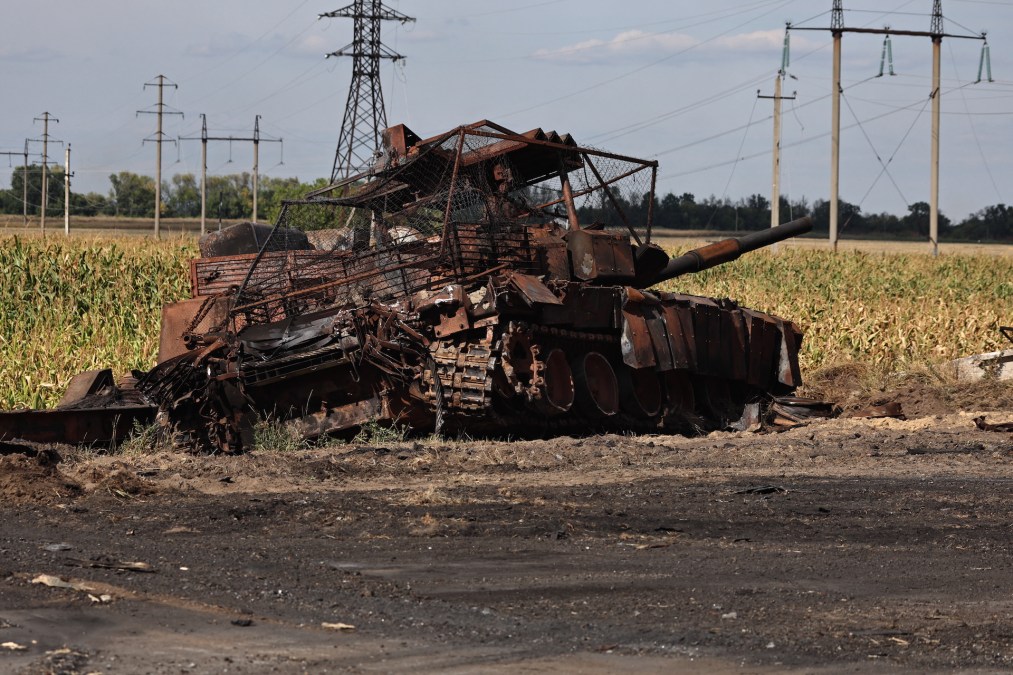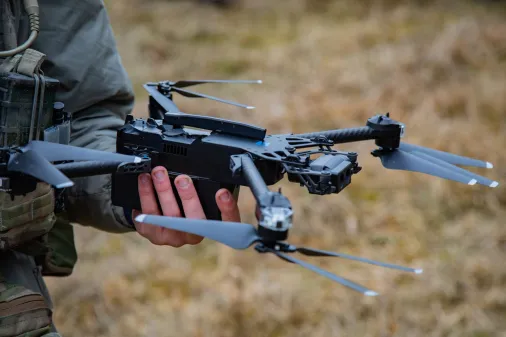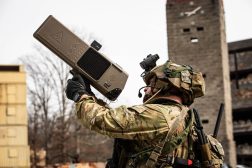Ukraine destroyed 3,000 Russian tanks in past year, US commander tells lawmakers

One-way attack drones and other Ukrainian weapons have destroyed thousands of Russian tanks in the past year as well as thousands of other platforms, according to the commander of U.S. European Command.
Gen. Christopher Cavoli, who is dual-hatted as the Eucom chief and Supreme Allied Commander Europe for NATO, gave lawmakers an update on the war and the current battlefield situation Thursday during a Senate Armed Services Committee hearing.
“The scale of this conflict is just awe-inspiring. Thousands of tanks destroyed on both sides,” Cavoli said.
At the start of the full-scale war in February 2022, Russia had about 13,000 tanks on active status and in storage, according to Cavoli.
“They’re starting to approach near the end of … the useful tanks in storage. So, depending on how much more they lose, that will really determine how quickly they can regenerate,” he told lawmakers.
“Russian ground forces in Ukraine have lost an estimated 3,000 tanks, 9,000 armored vehicles, 13,000 artillery systems, and over 400 air defense systems in the past year,” Cavoli said in a written statement to the committee.
However, Moscow is on pace to replace those losses, he added, noting that it has expanded its industrial production, opened new manufacturing facilities, and converted commercial production lines for military purposes.
“As a result, the Russian defense industrial base is expected to roll out 1,500 tanks, 3,000 armored vehicles, and 200 Iskander ballistic and cruise missiles this year. (Comparatively, the United States only produces about 135 tanks per year and no longer produces new Bradley Fighting Vehicles.) Additionally, we anticipate Russia to produce 250,000 artillery shells per month, which puts it on track to build a stockpile three times greater than the United States and Europe combined,” Cavoli wrote.
Cavoli did not provide comparative figures for Ukraine’s equipment losses and weapons production.
Moscow’s production capability for some items, such as artillery shells and cruise missiles, has expanded “tremendously,” and it’s building one-way attack drones “in prodigious numbers,” he told senators, noting that Russian ground forces are integrating reconnaissance and kamikaze drones into their offensive operations on the battlefield.
Ukraine has used a variety of weapons — including unmanned aerial systems, artillery and Javelin missiles, among others — to destroy Russian tanks and other equipment.
Cavoli noted that both sides in the conflict are also conducting long-range attacks, with the Russians deploying cruise missiles and glide bombs and the Ukrainians relying mainly on one-way attack drones.
Ukraine is also using “some indigenously produced cruise missile systems — one in particular that I’ve got in mind that we can talk about in closed session,” Cavoli told SASC members.
The U.S. has provided large quantities of UAS — including kamikaze drones such as Switchblades and the Phoenix Ghost family of systems — to Kyiv since the war began to help it counter Russia’s invasion.
However, Ukraine’s defense industry has ramped up and is producing many of its own munitions.
“I would say they’re the world leaders in one-attack drone technology,” Cavoli told lawmakers.
President Donald Trump, noting the heavy losses on both sides of the conflict, has been pressuring Ukraine to reach a peace deal with Russia.
Meanwhile, the U.S. military is learning lessons from the war.
Cavoli mentioned the Army’s transforming-in-contact initiative — which is focused on modernizing the force with UAS, counter-UAS and electronic warfare — as an example of how the Defense Department is shaking things up based on what officials are seeing in Europe.
“Our use of drones has changed deeply across the joint force. Before this conflict, in the U.S. Army, for example, we had very few [UAS], but large drones associated with large units. Now we’re proliferating smaller drones to smaller units and having a larger number of drones in lower and lower hands. Fundamental change in the way where we’re doing business,” he said.






